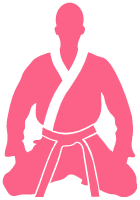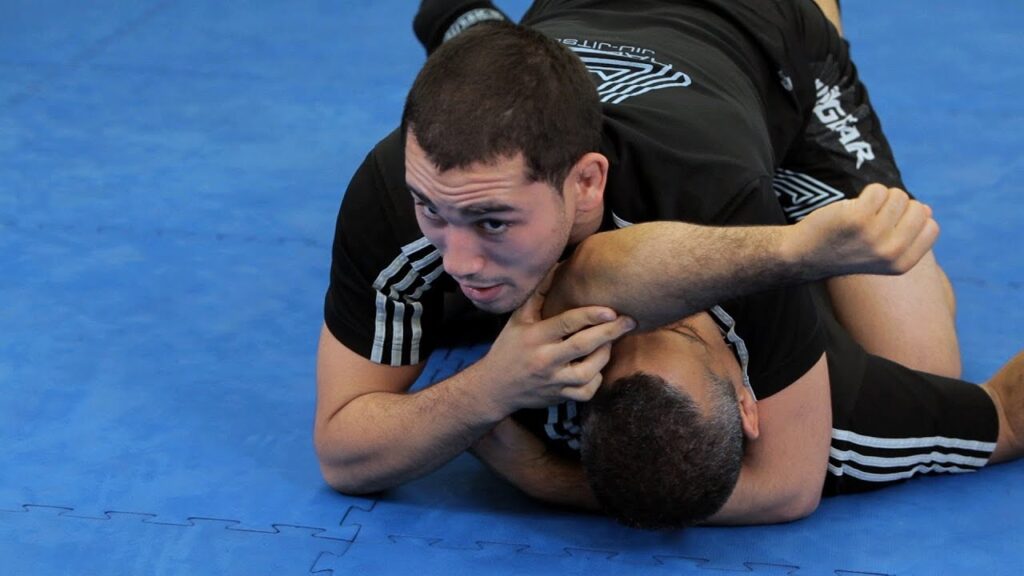The arm triangle, also known as the kata gatame, is a powerful submission that can be executed from a variety of positions, including the mount. In this blog post, we will discuss the key concepts and techniques required to execute the arm triangle from mount effectively.
Positioning and Control
The first step in executing the arm triangle from mount is to establish proper positioning and control. Begin by mounting your opponent with your hips positioned high and your weight distributed evenly. Once you have established a solid mount, you can start to work on controlling your opponent’s arms and head.
One of the most common ways to control your opponent’s arms from mount is to use the cross-face. To execute this technique, use your free arm to reach across your opponent’s neck and place your hand on the far shoulder. Apply pressure to the shoulder to turn your opponent’s head away from you and prevent them from framing with their arms.
To control your opponent’s near arm, you can use an overhook. Reach under your opponent’s near arm and secure a grip on their tricep. Pull your opponent’s arm across their body and place your elbow on their shoulder to prevent them from regaining their guard.
Setting up the Arm Triangle
Once you have established proper positioning and control, you can start to work on setting up the arm triangle. Begin by sliding your free arm under your opponent’s neck and grabbing onto your own bicep. Use your other arm to continue controlling your opponent’s arm and maintain your mount position.
From here, you can begin to apply pressure to your opponent’s neck by pulling your elbow towards you and squeezing your arms together. As you do this, keep your hips heavy and maintain a solid mount position to prevent your opponent from escaping.
Finishing the Arm Triangle
To finish the arm triangle from mount, you will need to apply pressure to your opponent’s neck and squeeze your arms together until they tap out or go unconscious. However, there are a few key details to keep in mind to ensure a successful submission.
First, make sure to keep your opponent’s head and shoulder pinned to the mat to prevent them from bridging and rolling out of the submission. Additionally, be sure to maintain a high mount position and keep your weight distributed evenly to prevent your opponent from escaping.
As you apply pressure to the arm triangle, you can also use your body weight to increase the pressure on your opponent’s neck. You can do this by lowering your hips and driving your body weight into your opponent’s chest.
Common Mistakes to Avoid
One of the most common mistakes when attempting the arm triangle from mount is failing to establish proper control of your opponent’s arms and head. Without proper control, your opponent can easily escape the submission and reverse the position.
Another common mistake is failing to maintain a solid mount position. If you allow your weight to shift too far forward or backward, your opponent can easily bridge and roll out of the submission.
Finally, it is important to remember to maintain proper form and technique throughout the submission. If you allow your elbows to flare out or your weight to shift, you can lose the submission and give your opponent an opportunity to escape.
Key Concepts to Remember
To execute the arm triangle from mount effectively, there are several key concepts to keep in mind. First and foremost, it’s crucial to establish a solid base from the mount position to prevent your opponent from bucking you off or escaping. This means maintaining a wide, stable base with your knees and hips, and using your hands and arms to maintain control of your opponent’s head and arms.
Next, it’s important to maintain proper body positioning throughout the submission. As you transition from mount to the arm triangle, be sure to keep your weight centered over your opponent’s chest and hips, and avoid leaning too far forward or backward. This will help you maintain control and avoid getting swept or losing the submission.
Finally, be sure to apply steady and consistent pressure to your opponent’s neck with your forearm, and use your other hand to secure their arm across their neck. Don’t rush the submission or use excessive force, as this can lead to mistakes and allow your opponent to escape. Instead, focus on maintaining control and gradually increasing the pressure until your opponent taps out.
Step-by-Step Guide to Executing the Arm Triangle from Mount
- Begin in mount position with your opponent on their back.
- Slide your right arm under your opponent’s neck and place your right hand on your left bicep.
- Keep your left hand posted on the mat to maintain balance and stability.
- Push your left elbow into your opponent’s stomach to create pressure and force them to turn their head towards their right side.
- Slide your left hand up to grab your opponent’s left triceps and pull it towards you as you simultaneously push your right arm forward, tightening the choke.
- Bring your chest down onto your opponent’s right shoulder to apply more pressure and finish the submission.
- If your opponent is still resisting, use your legs to trap their left arm by bringing your left knee up to their shoulder and squeezing your thighs together.
- Hold the position for the submission or until your opponent taps out.
The arm triangle from mount is a powerful submission that can be executed with proper positioning, control, and technique. By following the key concepts and techniques outlined in this blog post, you can increase your chances of successfully executing the arm triangle and securing a submission from mount. Remember to always focus on maintaining proper control and positioning, and to avoid common mistakes that can cost you the submission.
Hey there! Just a heads up that some of the links in this post are affiliate links, which means that if you click on them and make a purchase, I may earn a commission. But don’t worry, it won’t cost you anything extra – in fact, you might even get a sweet deal! Plus, every purchase made through one of these links helps support my blog and keep the content coming. So, if you do decide to make a purchase, thank you so much for your support – it means the world to me!
All the best,
Will












